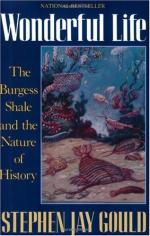
|
| Name: _________________________ | Period: ___________________ |
This test consists of 5 multiple choice questions, 5 short answer questions, and 10 short essay questions.
Multiple Choice Questions
1. How many levels are there in the taxonomy of life?
(a) Several.
(b) Hundreds.
(c) None.
(d) Few.
2. How much of all marine life died during the greatest extinction in history?
(a) 5%.
(b) 47%
(c) 89%.
(d) 96%.
3. What did the new methods Whittington and his team adopted help them do?
(a) Transport the fossils.
(b) Organize the fossils.
(c) Recast the fossils.
(d) Study the fossils.
4. Which creatures are representative of these four classes that survived the first great extinction?
(a) Snails, crabs and dragonflies.
(b) Eurypterid, mollusk, sea cucumbers.
(c) Dragonfly, a fossil eurypterid, a crab and a trilobite
(d) Dragonfly, crabs, and trilobites.
5. What bizarre features does Opabinia possess?
(a) Eight noses and four eyes.
(b) No nose and three eyes.
(c) Twenty limbs.
(d) Frontal nozzle and five eyes.
Short Answer Questions
1. Who discovered Harry Whittington's analysis of fauna decades later?
2. What comprises the first 4 billion years of Earth's history?
3. What types did Whittingdon use to classify the new species?
4. What are the evidences for Opabinia that are considered undeniable?
5. What did Whittington conclude about Yohoia in 1975?
Short Essay Questions
1. What did Whittington find Opabinia to actually be?
2. What did people think Opabinia was and what did Whittington choose to believe about this idea?
3. What is the first chapter of "Wonderful Life: The Burgess Shale and the Nature of History" about?
4. What sorts of new procedures did Whittington's team use?
5. Name four levels of the taxonomy of life.
6. Why are the Burgess Shale's arthropod designs odd?
7. What did Leif Størmer decide to do in contrast to Walcott?
8. What was the difference between Simon Conway Morris and Whittington in the way that they worked?
9. What evidence favors Opabinia's uniqueness?
10. Why did Gould write this book as an homage to the Burgess Shale?
|
This section contains 599 words (approx. 2 pages at 300 words per page) |

|




